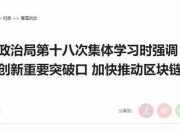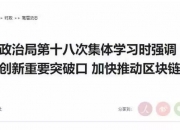比特币和物联网这两个看上去似乎毫不相关的术语,随着IBM&Samsung在15年2月份演示的ADEPT物联网解决方案DEMO后,硬是把比特币和物联网结合在一起了。
& nbsp; & nbsp; & nbsp; & nbsp; 本文就简单剖析下比特币和物联网是否如何结合在一起的,以及它们的结合对未来物联网又有怎样的影响。 & nbsp; & nbsp; & nbsp; & nbsp; & nbsp; & & nbsp; A simple analysis of how bitcoin and item networking are combined and how their combination affects future object networking. 一、比特币 I. Bitcoin 比特币(BitCoin)的概念最初由中本聪在2009年提出,根据中本聪的思路设计发布的开源软件以及建构其上的P2P网络。比特币是一种P2P形式的数字货币。点对点的传输意味着一个去中心化的支付系统。据查阅资料显示,中本聪认为传统的金融体系存在以下问题: The concept of BitCoin was originally proposed by Nakamoto in 2009, designing the open-source software to be released along with the P2P network on which it is based. Bitcoin is a digital currency in the form of a P2P. Point-to-point transmission means a decentralised payment system. According to the information consulted, Nakamoto believes that there are problems with the traditional financial system: 1.成本太大: 为了维持现有的货币发行机构以及金融和支付体系,需要投入大量的基础设施,比如:银行等机构的投入、金融机构的数据中心等等; 1. Too high a cost: In order to maintain the existing money issuing institutions and financial and payment systems, a significant amount of infrastructure needs to be invested, such as inputs from institutions such as banks, data centres of financial institutions, etc.; 2.安全问题:当前以货币发行机构组建的金融体系,其信用度以靠各国政府背书的,你无法控制货币的增发、资金的冻结以及交易的取消等机构行为。 2. Security issues: The credibility of the current financial system, which is organized by money-issuing agencies, depends on the endorsement of Governments, and you have no control over the growth of money, the freezing of funds and the cancellation of transactions. 因此,一个去中心化,无需中心机构的金融体系就可以解决这个问题,所以比特币还存在经典的51%攻击问题,但它的出现,给了人们在不同行业无限遐想的空间。 As a result, a decentralized financial system does not require central institutions to solve the problem, so there is still a classic 51 per cent attack problem in Bitcoin, but its emergence gives people unlimited space to think about in different industries. 二、物联网 II. SUBSTANCE NETWORKS 物联网,“Internet of things(IoT)”。顾名思义,物联网就是物物相连的互联网。这有两层意思:其一,物联网的核心和基础仍然是互联网,是在互联网基础上的延伸和扩展的网络;其二,其用户端延伸和扩展到了任何物品与物品之间,进行信息交换和通信,也就是物物相息。 The Internet, “Internet of things” (IOT). By definition, the Internet is a network that connects objects . This means, first, that the core and foundation of the network remains the Internet, an extended and expanded network based on the Internet; and, second, that its end-end extends and extends to any object and item, to exchange information and communications, i.e., goods and interests. 那么物联网有面临什么挑战呢? So what are the challenges facing the Internet? 1.物联中国报道,预计未来十年,物联网的设备将达到1000亿量级。对于如此庞大的网络,如果以中心化的组网模式,数据中心的基础设施投入、维护成本将无法估量; 1. The Federation of China reports that, over the next 10 years, the equipment for the network is expected to reach a level of 100 billion. For such a large network, the infrastructure input and maintenance costs of the data centre cannot be estimated if it is based on a centralized network model; 2.在云计算尚未打消人们对数据安全的疑虑的,物联网的设备更加深入人们的生活隐私,比如:你家的电饭锅每天几点做饭、做几人份的、家里的热水器是几点开始工作的,这些数据如果都传输的管理中心节点,那么你的物联网方案又该如何应对呢? 2. Where cloud computing has not dispelled doubts about data security, the devices of the Internet are much deeper into the privacy of people's lives: for example, how many times a day does your cooking pan cook, how many people do it, how many times does your water heater start working? 三、综述 III. OVERVIEW 我们不难发现,比特币要解决的问题与物联网所面临的挑战是有契合点的,也正是这个原因,IBM&Sansung就提出了基于Blockchain的物联网解决方案。它们所要采用的最核心的思路便是“去中心化”,这有非常大的想象空间。 It is not hard to find that the issues to be addressed by Bitcoin coincide with the challenges to the Internet, and it is for that reason that IBM & Sansung has proposed the Blockchain-based approach to the network. The most central idea they want to use is “decentralization”, which has a very large imagination.
注册有任何问题请添加 微信:MVIP619 拉你进入群

打开微信扫一扫
添加客服
进入交流群





















发表评论